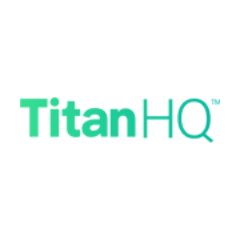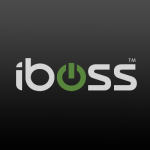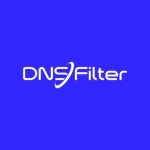What is our primary use case?
We typically use the solution to filter web access. We don't connect to the internet with our workstations. They are behind the firewall and all the traffic goes through a proxy server in order to implement content filtering. With some users, we use this solution to restrict access to specific websites only.
What is most valuable?
The solution is very easy to implement and to set up, especially from an administration point of view.
The policy for each user, or groups of users, has many options. You have categories, and you also have scores with keywords for each page. There are so many options for filtering.
The solution offers good reports and good debugging in case you need to fix something which is not working.
When some sites are blocked, you can easily find the reason and make exceptions as necessary. They filter also HTTPS traffic with a certificate.
The solution acts sort-of like a middle man, but it works fine. That's because these days most of the sites are using certificates, so you can filter for this specific kind of traffic as well.
The solution offers very good self-authentication. It has a lot of protocols and ways to authenticate users by IP, or by Active Directory Integration. It's able to take credentials from the Active Directory Domain Controllers.Of course there are local users and groups.
It works also outside the network, with the same rights and the same authentication policy and protocol. We can use it also for users outside of the network on laptops when they are traveling. They can access this proxy and implement the same policies as if they were inside the network.
What needs improvement?
There are some small bugs in the real-time login environment. There is a real-time logging and you can see which URLs are blocked or allowed for every user. They should make sure this is resolved in future releases.
While there is an antivirus on offer, it's not a very good one. We're not using it because it's not effective. However, if they had an effective anti-virus, we would make use of it. There really should be a more professional level of antivirus on the solution's version for web filtering.
There should be a more granular internet site categorization. Some categories are more flexible than others, but all categories should be flexible.
For how long have I used the solution?
We've been using the solution for four years.
What do I think about the stability of the solution?
It's doesn't have any problems in terms of causing a slow down in traffic. However, we only have a limited amount of users. Our user count is 40-45 at the most.
For us, I've found the stability to be good. There's no freezes or anything of that nature. We can't complain.
What do I think about the scalability of the solution?
In terms of scalability, and how many users it supports, it's hard for me to really say with certainty. We don't have too many users, so I can't speak about scaling from personal experience. If you purchase the correct amount of license, it shouldn't be an issue.
It's mainly a Unix distribution. On top, there is a modified content filter the name of which I can't recall. I believe it's well known. You might need more memory or more processing power when you increase the number of users. That might help the scaling up run smoothly.
I'm also talking about the cloud version. If you use a cloud version, they need to know your IPs and it's different and of course, it's more scalable if you have the cloud version because you don't have the constraints of a physical machine. Ours is on-site, so it may be limited in that sense.
We have 50 licenses and maybe 40 users. We do not have so many users, but they are using it all the time because all of our traffic is through this proxy server.
How are customer service and technical support?
I've contacted technical support in the past. It hasn't happened very often.
Technical support has a mechanism where you can allow them to remotely connect to your system. This helps them to see and diagnosed issues much easier. With a remote connection, they can make some system changes or correct some bugs or anything of that nature.
I'm satisfied with them. While I don't deal with them often, on the few instances I have I remember technical support responding quickly and using remote access effectively to get everything back in working order.
Which solution did I use previously and why did I switch?
We did use a different product, SafeSquid. It was also an on-premises solution.
It was good for content filtering but they couldn't filter encrypted connections. That's what made it unsuitable for us. This, however, was some years ago.
We switched mainly for the encrypted traffic filtering, which was not possible with the previous solution. This was the main reason I start to search for something else, and this solution was the one I found and implemented.
How was the initial setup?
The initial setup is straightforward.
Ours is a virtual machine, so there are not many items to set up. In order for it to work you mostly work on the access policies themselves. Really no need to maintain the system as much.
There are automatic updates. They don't happen very often, but they are easy to apply.
You can set up the system in a few hours. It's good to have your own certificates or anything else you need ready so you can set it up efficiently. Then you can work with policies to define the access for users within groups. You can implement everything every easily if you know exactly what you want to do. You can set it up in a matter of days at most.
Of course, it depends on how many users or groups, and how much fine-tuning you need in the policies. It's more routine work once you understand how to set it up. You just repeat the same process for other users with some minor differences in the settings and so on.
What about the implementation team?
I've had experience with the product in the past. It's easy to set up for users even with medium-level knowledge of the solution.
What's my experience with pricing, setup cost, and licensing?
While you will have to pay for the service, you can do a free trial to test how it works. It's possible to get up to a three-year license, which is what we did. We don't mind paying in advance.
What other advice do I have?
And I think we are on the last version of the solution because we are doing updates soon. I believe this solution only offers one or two updates each year.
There is a free trial period you can try for a few weeks. That way, you can see how it works before buying.
My advice to other companies is to try the solution out first to see if it covers all of your needs.
I'd rate it nine out of ten. If it wasn't for some minor bugs it would practically be perfect.
Which deployment model are you using for this solution?
On-premises
Disclosure: I am a real user, and this review is based on my own experience and opinions.










